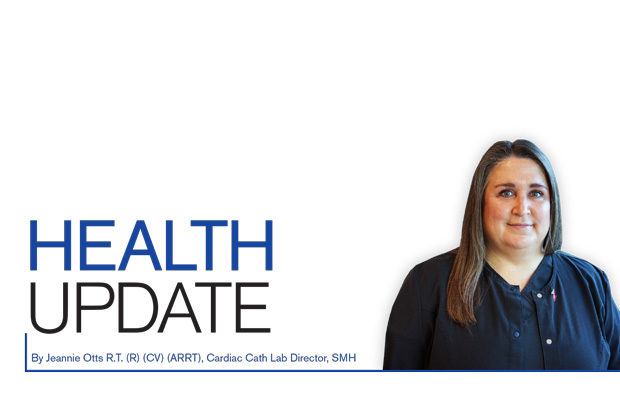A Healthy Heart—Nothing Beats It

Cardiovascular disease is the leading cause of death in America, and Arkansas is third in the country for the most deaths related to heart disease. Approximately 750,000 people in the U.S. have heart attacks each year, and of those, about 116,000 die. While these numbers are staggering, statistics show that by recognizing the early signs of a heart attack or stroke and taking action, many of these deaths could be prevented. In honor of February being heart month, we’re working to educate our community on how to prevent a heart attack, how to recognize the early signs, and what to do if you or someone you know has a heart attack.
Saving lives starts with understanding who is at risk for having a heart attack and recognizing who around you may be affected.
What are the RISK FACTORS?
These are the general risk factors. Discuss your risk with your doctor.
• Intermittent chest pain, pressure, burning, aching, or tightness
• A family history of cardiovascular disease
• High blood pressure
• Overweight status or obesity
• Sedentary lifestyle
• Using tobacco products
• Metabolic disease, diabetes or other illnesses
• For women it can also include birth control pills, a history of pre-eclampsia, gestational diabetes or having a low birth weight baby
What is the difference? MEN vs WOMEN
Some heart attack symptoms can be different between men and women. Why does it matter? Women may be less likely to seek immediate medical care, which can cause more damage to the heart.
• Men normally feel pain and numbness in the left arm or side of chest, but in women, these symptoms may appear on the right side.
• Women may feel completely exhausted, drained, dizzy or nauseous.
• Women may feel upper back pain that travels up into their jaw.
• Women may think their stomach pain is the flu, heartburn or an ulcer.
What are ATYPICAL PRESENTATIONS?
In an atypical presentation, the signs and symptoms are different. How? The patient may not complain about pain or pressure in the chest. Be alert for the following:
• A sharp or “knife-like” pain that occurs with coughing or breathing.
• Pain that spreads above the jawbone or into the lower body.
• Difficult or labored breathing.
Understanding the Early Signs of Heart Attack
The next step towards saving lives is to understand the early signs of a heart attack and what to do if you experience them. These signs include:
Chest Discomfort – Most heart attacks involve discomfort in the center of the chest that lasts more than a few minutes, or that may go away and then return. It can feel like uncomfortable pressure, squeezing, fullness or pain.
Discomfort in other areas of the upper body – Symptoms can include pain or discomfort in either or both arms, the back, neck, jaw or stomach.
Shortness of breath – This can occur with or without chest discomfort.
Other signs – Other possible signs include breaking out in a cold sweat, nausea or lightheadedness.
Together with the American Heart Association, Saline Health System is asking people to take the EHAC (Early Heart Attack Care) Pledge from the Deputy Heart Attack Program from the American College of Cardiology. This pledge states:
“I understand that heart attacks have beginnings that may include chest discomfort, shortness of breath, sweating, shoulder and/or arm pain, and weakness. These may occur hours or weeks before the actual heart attack. I solemnly pledge that if it happens to me or anyone I know, I will call 9-1-1 or activate our Emergency Medical Services.”
If you do miss the early signs and someone collapses, it’s important to stay calm, call 9-1-1 and begin hands-only CPR. It takes just minutes to learn, but you could be adding years to someone’s life. If an AED is available, deploy it as soon as possible. AED’s provide easy to follow verbal instructions in order to help someone. If you’re interested in learning more about hands-only CPR, visit heart.org/handsonlycpr.
As the Cardiac Cath Lab Director, I’m passionate about making our communities healthier by providing education, resources and support around heart care. Learn more about heart care in our community by visiting salinememorial.org/heart-vascular.
Information for this article provided by the American College of Cardiology Deputy Heart Attack Program and the American Heart Association.






0 comments